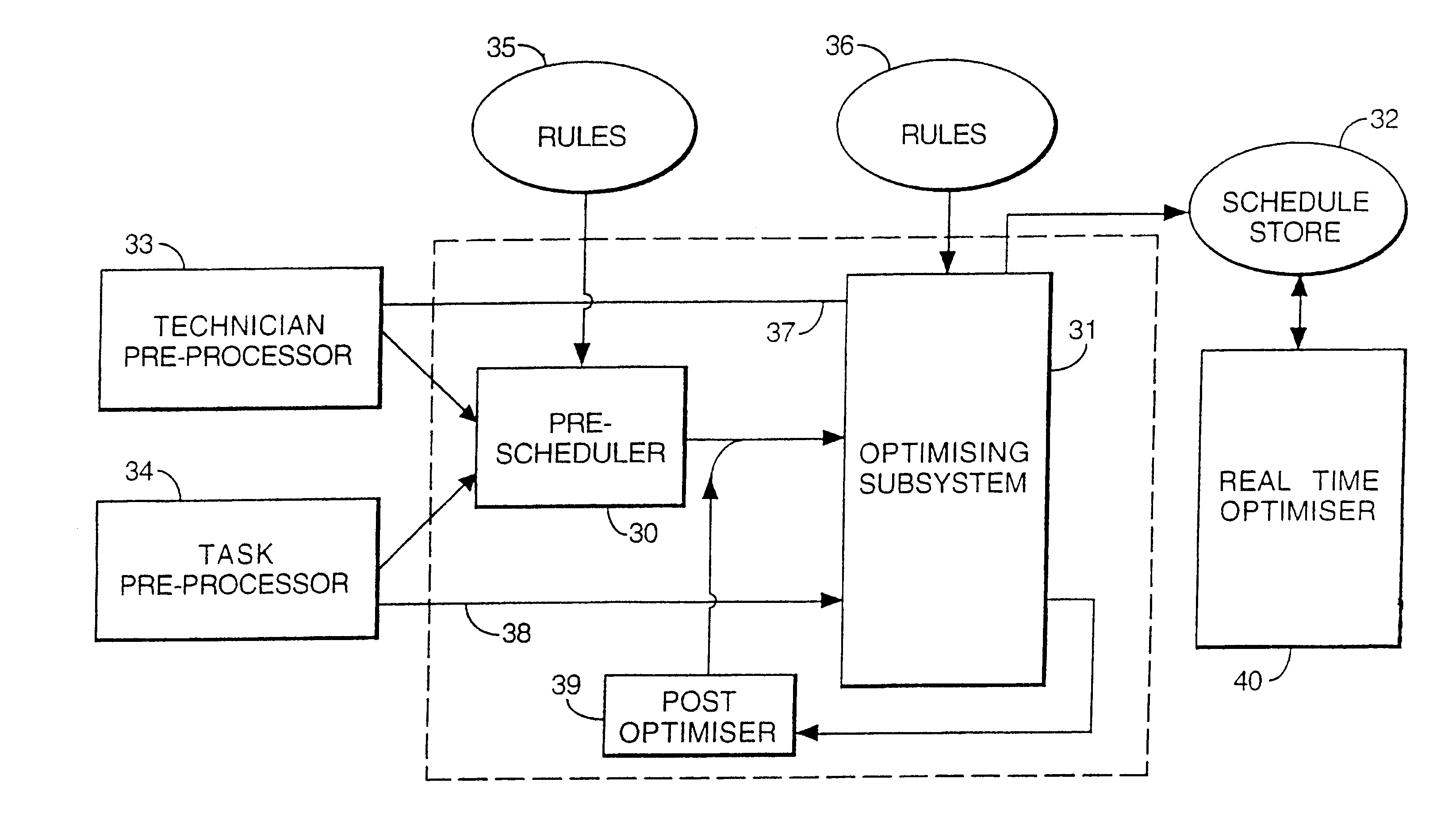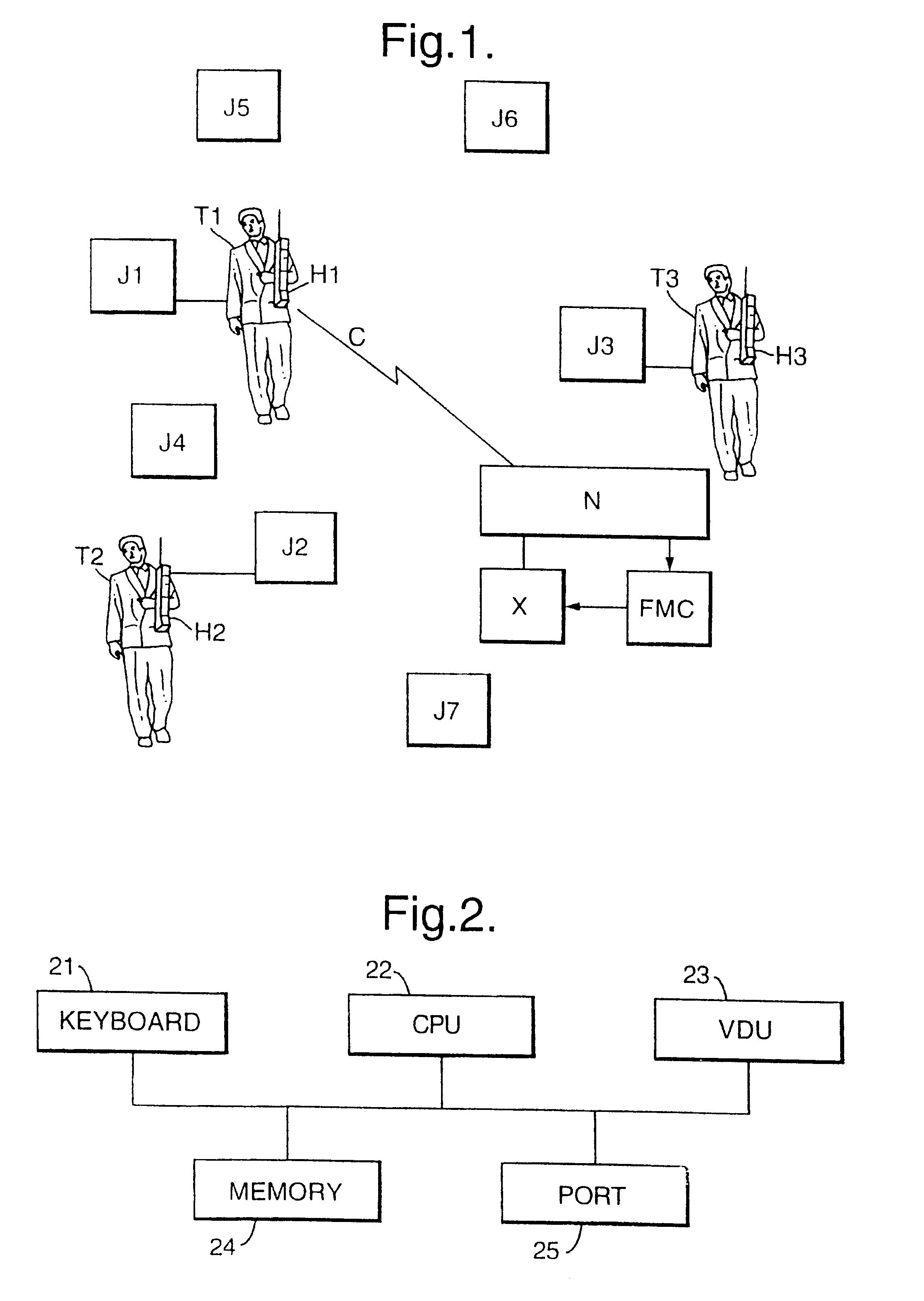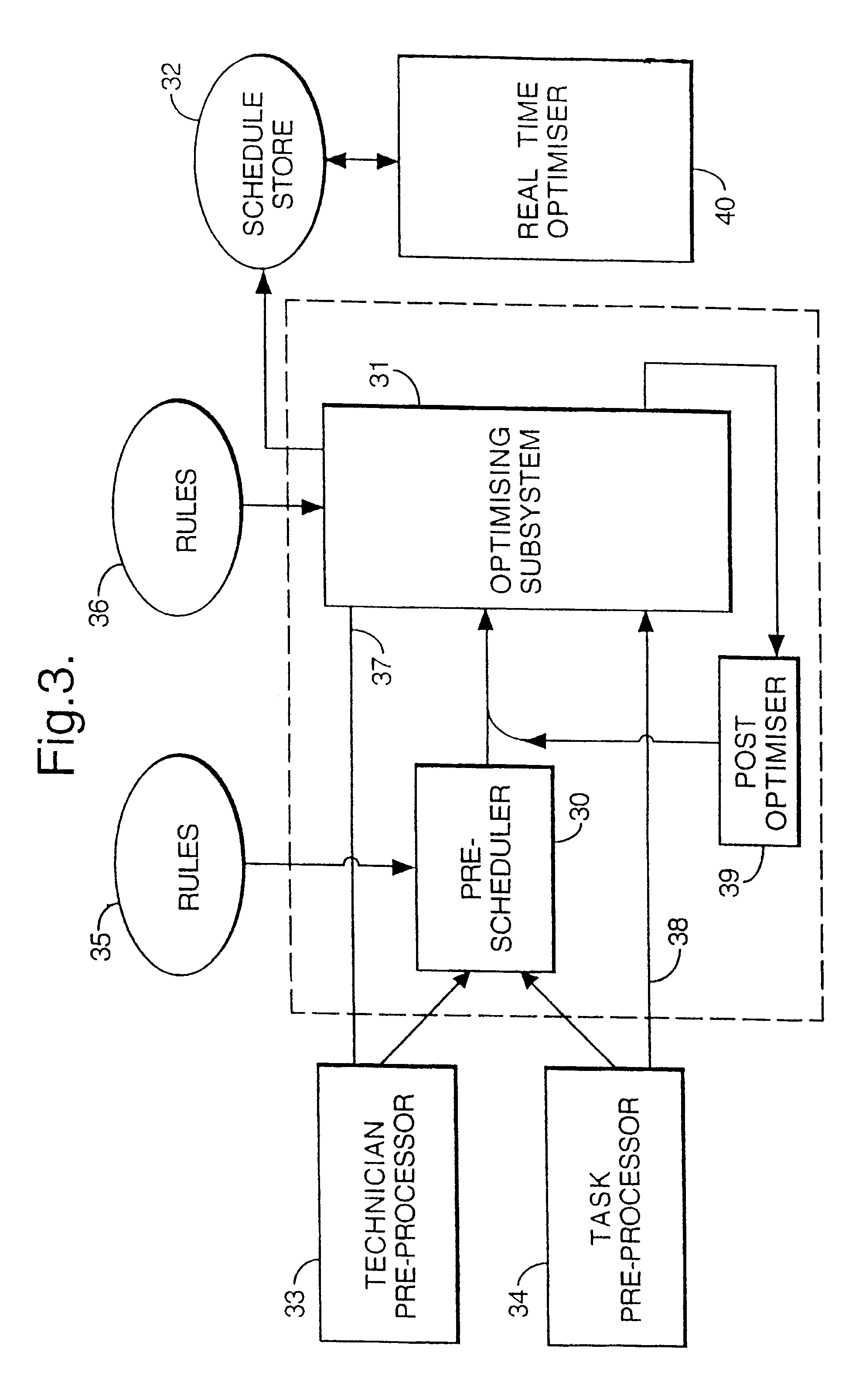Method and apparatus for resource allocation when schedule changes are incorporated in real time
a schedule change and resource technology, applied in the field of method and apparatus for resource allocation when schedule changes are incorporated in real time, can solve the problems of high volatility, high work load, and individual task durations themselves, and affect the resource availability of tasks awaiting allocation
- Summary
- Abstract
- Description
- Claims
- Application Information
AI Technical Summary
Benefits of technology
Problems solved by technology
Method used
Image
Examples
Embodiment Construction
Referring to FIG. 1, there is shown a telecommunications system, represented by a block N, which is monitored by a fault-monitoring system FMC. The fault monitoring system FMC detects faults in the network which require attention, and also receives inputs from a human operator e.g. to schedule planned maintenance, to generate task requests J1, J2, J3, J4, J5, J6, J7 to be performed by a field force of technicians T1, T2, T3. The task requests are input to a resource allocation system comprising an apparatus in the form of a computer X for allocating resources to tasks, which can communicate through the telecommunications network N with hand-held terminals H1, H2, H3, as required. As shown in FIG. 1, terminal H1 is currently in communication with the computer X through a connection C. Each of the hand-held terminals may be a Husky model FS12 produced by Husky Computers Ltd of Coventry, England, but other suitable equipment may be used.
In a real situation there will be many technician...
PUM
 Login to View More
Login to View More Abstract
Description
Claims
Application Information
 Login to View More
Login to View More - R&D
- Intellectual Property
- Life Sciences
- Materials
- Tech Scout
- Unparalleled Data Quality
- Higher Quality Content
- 60% Fewer Hallucinations
Browse by: Latest US Patents, China's latest patents, Technical Efficacy Thesaurus, Application Domain, Technology Topic, Popular Technical Reports.
© 2025 PatSnap. All rights reserved.Legal|Privacy policy|Modern Slavery Act Transparency Statement|Sitemap|About US| Contact US: help@patsnap.com



